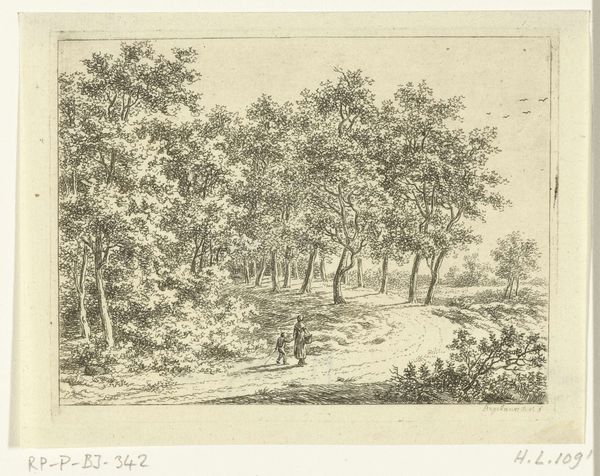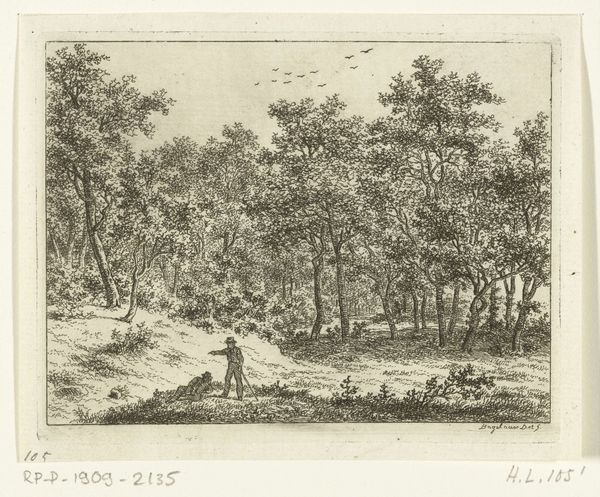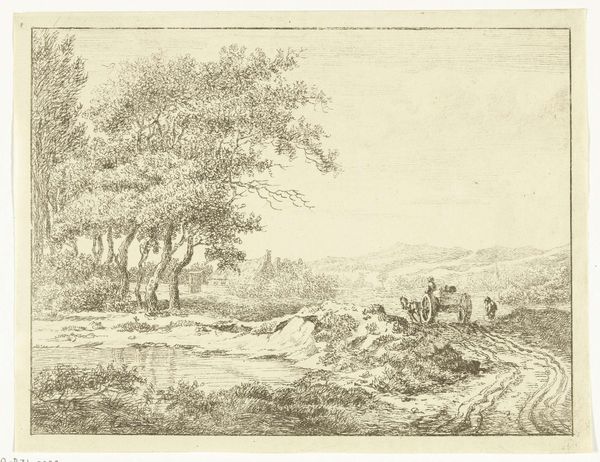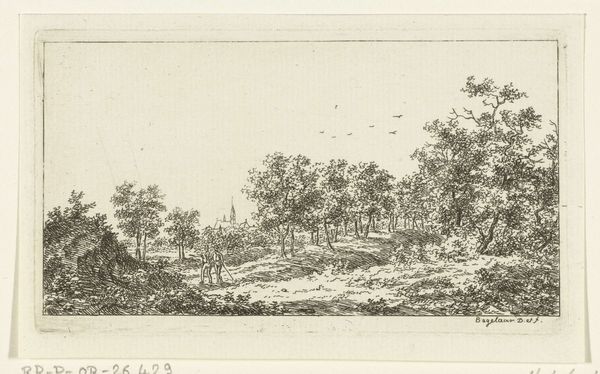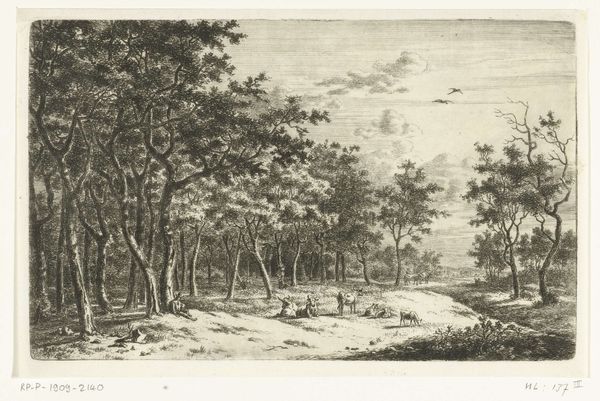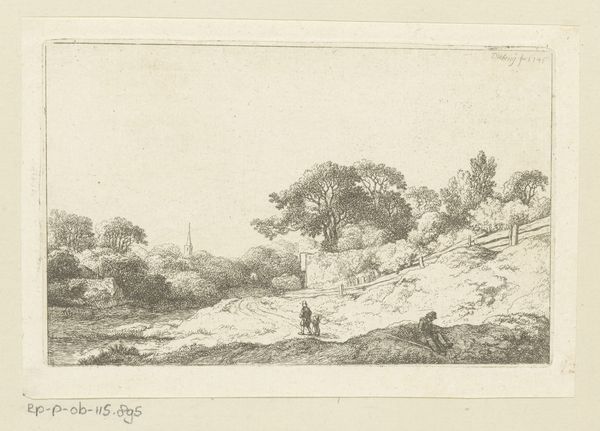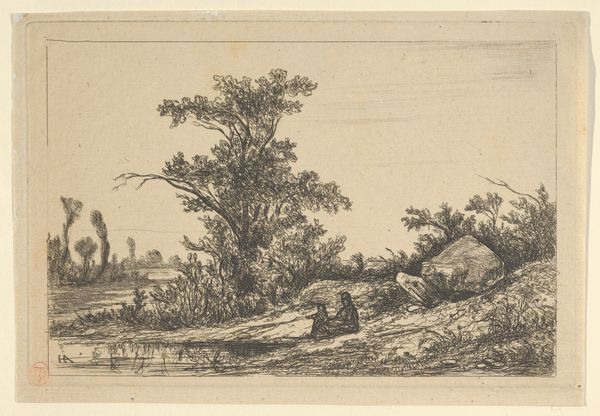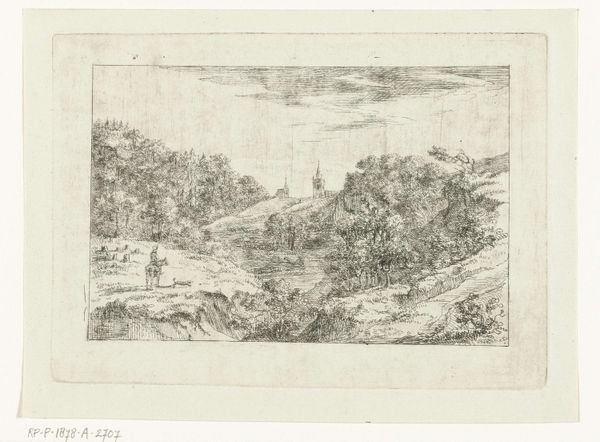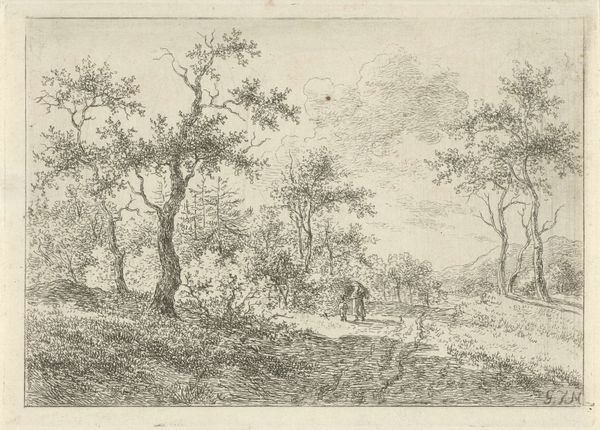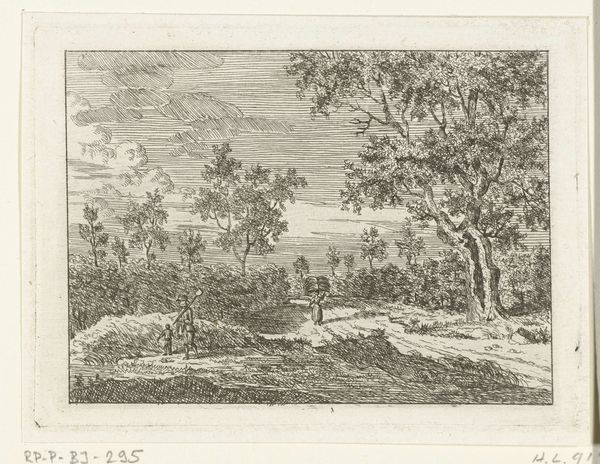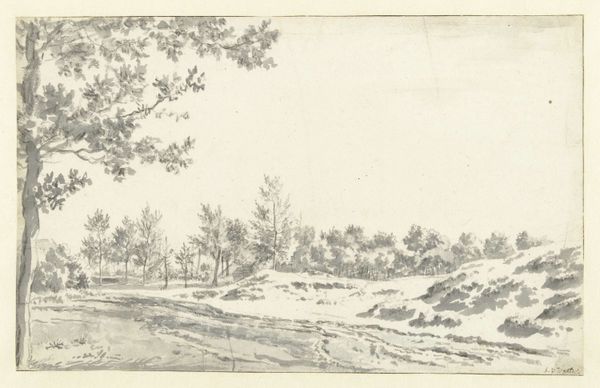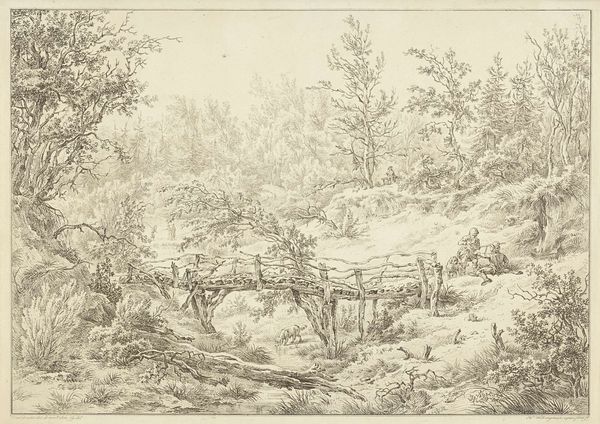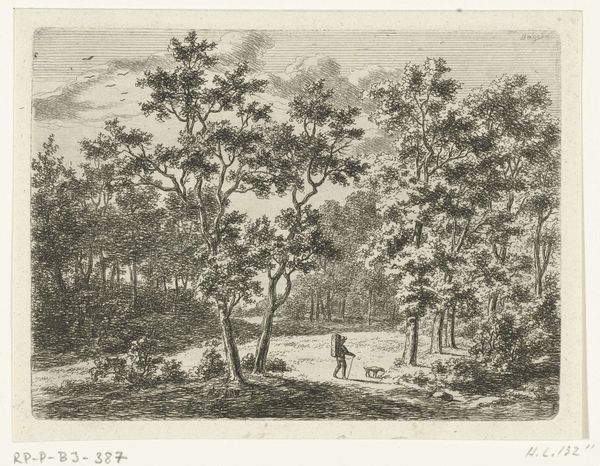
drawing, print, etching
#
drawing
# print
#
etching
#
landscape
#
etching
#
realism
Dimensions: height 85 mm, width 118 mm
Copyright: Rijks Museum: Open Domain
Curator: Here we have Ernst Willem Jan Bagelaar’s “Duinlandschap met wandelaar bij Bloemendaal," an etching, drawing, and print, placing its creation somewhere between 1798 and 1837. Editor: It's amazing how a seemingly simple landscape can evoke such a powerful sense of solitude and reflection. The muted tones and fine lines create this very contemplative mood. Curator: This etching exemplifies the period's fascination with the natural world. Think about how the Dutch Golden Age landscapes reflected a new sense of national identity. It's not just about visual representation, but an expression of cultural pride and ownership over their land. The landscapes tell us about Dutch maritime power, trade, and the general economic vitality. Editor: Yes, but it’s also important to remember how such images can be complicated. Who has access to this landscape? Whose story is not represented? Are we glorifying an idealised landscape which overlooks its environmental history, as well as those who rely on it for livelihood? The man is alone, yes, but what about the structures which make him the agent in that specific area? The way he traverses this scene? Curator: That's an interesting point, and it pushes us to consider landscape art as more than mere depiction. During Bagelaar’s life, the Netherlands went through enormous upheaval with the Batavian Republic and then French rule, for example. It may seem innocuous, but landscapes gained considerable patriotic value at this time. In creating images of specifically Dutch terrain, artists also reaffirmed, redefined, and indeed sometimes mythologized Dutch identity. Editor: I can certainly see that layer, especially knowing the broader political context of that time. It definitely invites a much richer understanding. Ultimately, this scene strikes me as simultaneously inviting, with its soft lines, yet slightly alienating due to the scale between the walker and the distant, and nearly faded, tower. The detail, achieved with such delicate materials, feels quite monumental. Curator: Indeed. By drawing attention to the details, one begins to consider more completely not only the aesthetic value but the history entangled within. Editor: Thanks. Considering that element makes all the difference in connecting and respecting these objects.
Comments
No comments
Be the first to comment and join the conversation on the ultimate creative platform.

